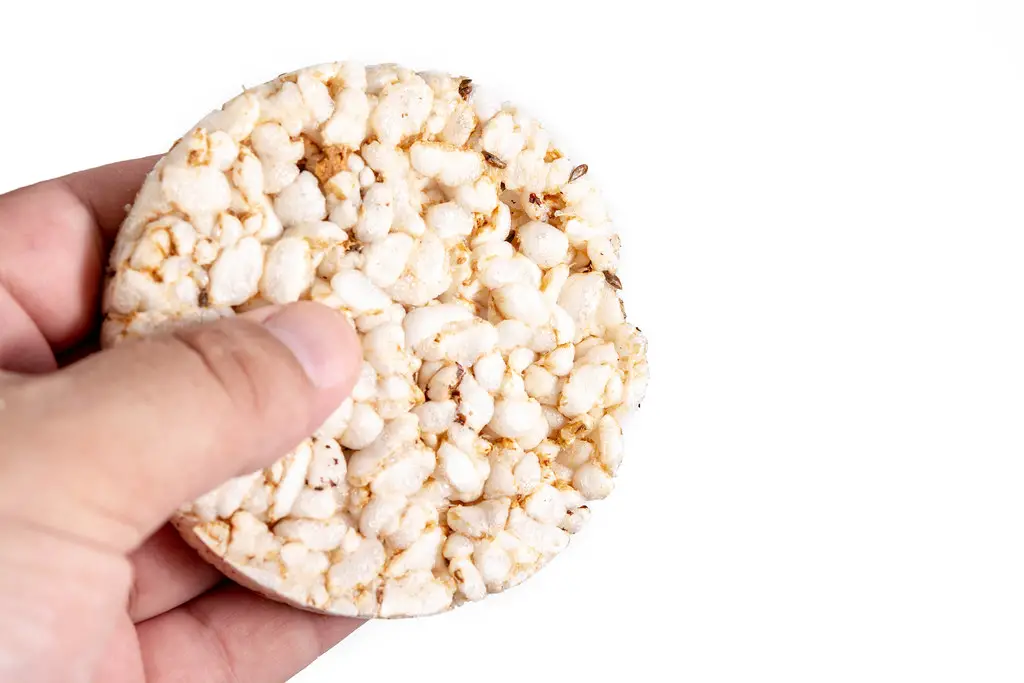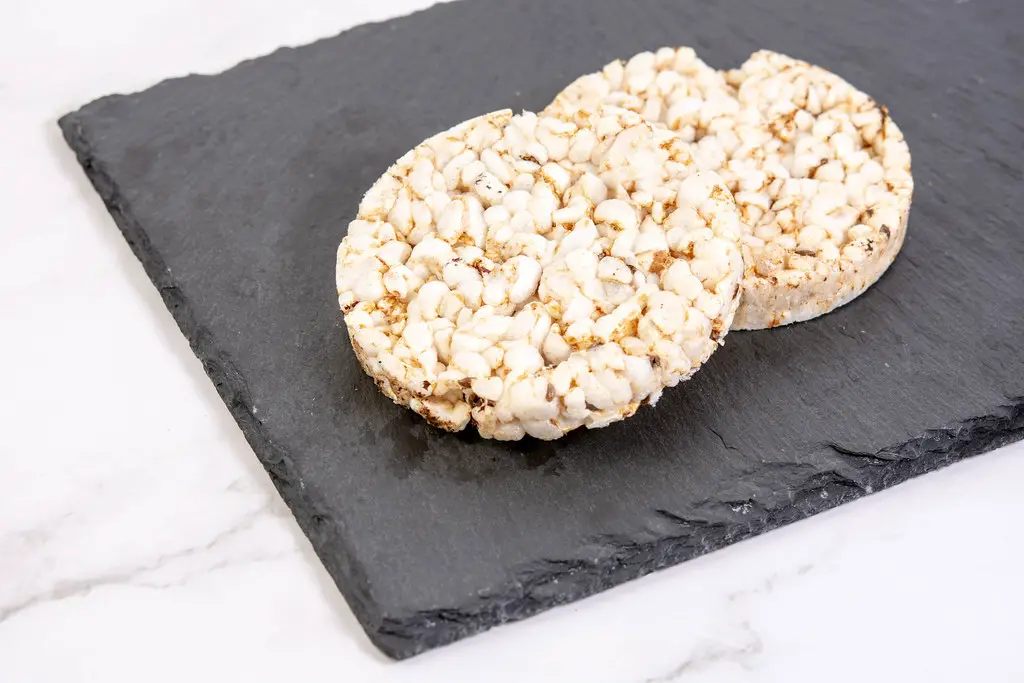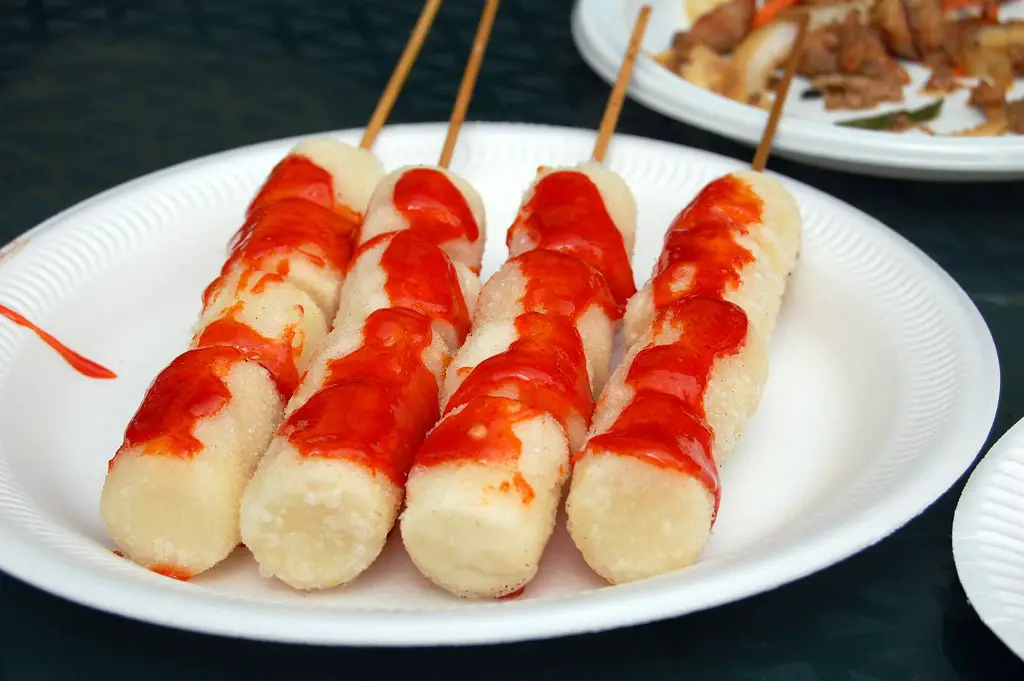
Rice cakes, not to be confused with a mooncake, are consumed in various cultures as a popular snack all around the world. They come in different shapes, sizes, and flavors. However, the taste of these cakes depends on personal preferences.
Some people regard them as dull and flavorless, whereas others enjoy their subtle and pleasant taste. These cakes often resemble the rice they are made from, arousing curiosity.
If you’re curious to explore the exact taste of these wholesome treats, continue reading.
What Do Rice Cakes Taste Like?
Rice cakes vary in taste from possibilities ranging from blandness to sweetness, nuttiness to even a hint of spiciness. The exact taste depends on your selection and preparation.
However, you can gain a comprehensive understanding of the flavor profile exhibited by rice cakes.
- Texture: Rice cakes have a light and crispy texture. They are often dry and airy, with a slight crunch when you bite into them.
- Flavor: The base flavor of rice cakes is neutral, similar to plain white rice. However, flavored rice cakes can have a variety of tastes, ranging from sweet to savory. Plain rice cakes tend to be bland, allowing them to absorb the flavors of any toppings or seasonings added to them.
- Fragrance: Plain rice cakes don’t have a strong fragrance. Flavored varieties might have a subtle aroma that corresponds to their flavorings, such as a hint of cheese for cheese-flavored rice cakes or a touch of sweetness for caramel-flavored ones.
- Toppings and Seasonings: Toppings and seasonings play a significant role in the taste of rice cakes. Whether you’re adding peanut butter, jam, avocado, cheese, or any other topping, these additions greatly influence the overall flavor. Savory seasonings like herbs, spices, or even soy sauce can transform the taste of a plain rice cake.
- Complementary Tastes: The taste of rice cakes can be enhanced when paired with complementary ingredients. For example, sweet rice cakes can go well with fruits like berries, while savory rice cakes might be enjoyed with dips or spreads like hummus.
- Crunchiness and Chewiness: The crunchiness of rice cakes gives a satisfying texture, while their chewiness can vary based on the brand and type. Thicker rice cakes might have a bit more chew to them.

What Influences the Taste of Rice Cakes?
The flavor of rice cakes can be influenced by a range of elements due to the adaptable nature of rice cakes that can be personalized with diverse ingredients and preparation techniques.
While these factors can certainly elevate the taste of rice cakes, they can occasionally have the opposite effect. So, let’s explore the specifics of these factors to gain a deeper understanding:
Thickness and Thinness
The thickness of rice cakes plays a significant role in shaping their taste experience. This attribute influences various aspects including texture, chewiness, and moisture content. Thicker rice cakes tend to be chewier, demanding more effort to bite through. However, they often have a drier and less intense flavor compared to their thinner versions.

When you are dealing with thicker rice cakes, you can use a strategic pairing with moist toppings to enhance both taste and nutritional value. For instance, you can choose options like salads, tuna fish dressing, ham, low-fat cream cheese, or peanut butter that can infuse protein, fiber, healthy fats, and vitamins into the rice cakes. This can create a more gratifying and well-rounded eating experience.
In contrast, thinner rice cakes offer a distinct appeal with their crispiness and ease of consumption. They boast a delicate rice flavor that is slightly sweet and salty. While you can pair them with various toppings, they may not require as much added moisture as their thicker counterparts.
Interesting Reading: What Does Creme Brulee Taste Like? A French Dessert Classic
Cooking Method
The way rice cakes are cooked can significantly alter their flavor. Different cooking techniques bring out distinct taste profiles in rice cakes, offering varying sensory experiences. Let’s look into the details of how different cooking methods influence the flavor of rice cakes:
- Oil Frying: The process of frying rice cakes with oil gently creates a sense of richness and a savory essence. This approach yields a crispy exterior and a chewy interior.
- Air-Frying or Popping: Air-frying or popping rice cakes maintains their inherent flavor which results in neutral and authentic taste profiles. These methods contribute to a crisper and lighter texture.
- Steaming: Steaming rice cakes renders them soft and moist, magnifying their sweetness and stickiness. Beyond texture, diverse flavors can be introduced via ingredients like coconut milk, cheese, or sugar.
- Boiling: Boiling rice cakes renders them tender and plump, as they absorb flavors from the surrounding broth or water. These boiled rice cakes serve as versatile components, complementing soups, stews, or sauces with their flavor absorption quality.
- Baking: Baking rice cakes imparts a golden and crusty outer layer that contrasts with the inner core. This method’s adaptability accommodates both sweet and savory variations, depending on the batter’s ingredients.
- Microwaving: Microwaving rice cakes is a quick and convenient method. This method tends to maintain the soft and chewy texture of the rice cakes, similar to steaming.
Extras
The flavor of rice cakes can experience captivating changes when diverse ingredients are introduced. For instance, consider Korean elements like gochugaru and gochujang paste, which impart a distinctive flavor and an appealing spiciness to rice cakes.

Moreover, the recipe can easily be adjusted to match your preferences, and extra ingredients can be added to prolong its shelf life. For example, the inclusion of cheese, vegetables, eggs, meat, or seafood can enhance the richness and nutritional value of rice cakes. This will help in making your rice cake more satisfying and nourishing in the context of taste.
Editor’s Pick: What Does Mezcal Taste Like? Good or Not?
Size and Type of Rice
The type of rice significantly influences the flavor of rice cakes. For instance, white rice cakes offer a more delicate taste compared to brown rice cakes. The difference is subtle, which reveals brown rice’s slightly sweeter and healthier flavor profile.
Another key player in the taste journey of rice cakes is their size. Smaller rice cakes tend to pack a more robust taste punch than larger ones. The shape of the rice cakes also matters for the flavor development. Rice cakes with irregular shapes are usually more delicious and have a sweeter flavor, while those with sharp edges might taste a bit like cardboard.
In regions where rice cakes are crafted from tightly packed rice grains, a rising trend involves the creation of smaller rice cake chips. These chips take shape during the drying process in molds, resulting in a curved form. This unique approach alters how our senses interpret the taste of rice cakes!
Fresh vs Stored Rice Cake
Rice cakes are at their best when consumed within a few days of purchase or preparation. During this time, they offer a soft texture and a subtly nuanced flavor that’s distinct from older rice cakes. As rice cakes age, they can turn crispy and hard, and their taste might even shift to sour or unpleasant. Even improper storage can lead to mold growth or bacterial contamination.

To keep rice cakes tasting good, you can store them in the fridge for up to 3 days or in the freezer for up to 3 months. It’s important to use an airtight container or wrap them well in plastic to stop air and moisture from getting in/out. This helps to make sure they stay fresh and delicious.
Related: What Does Flan Taste Like? Is It Too Sweet?
Signs of a Bad Rice Cake – Oh Oh!
If you come across a rice cake package that appears swollen or puffy, it could indicate that the rice cakes have been exposed to air or moisture. This exposure has the potential to result in spoilage. If you are facing the same situation, make sure to check out the following signs for spoilage confirmation.
- If your rice cake’s texture becomes chewy, stale, mushy, or it easily loses its shape and crumbles, it’s a signal to discard it.
- Examine for the presence of dark spots, discoloration, and mold growth; if these signs are present, it confirms that your rice cake has spoiled.
- Lastly, give your rice cake a sniff. If you detect a musty or unpleasant odor, it’s best not to consume it.
5 Best Ways to Enhance the Taste of Rice Cake
After experimenting with numerous techniques, our team has successfully identified the top five methods to elevate the flavor of rice cakes. We encourage you to give each of these approaches a shot, as we’re confident you’ll enjoy the results.
Cooking Up Fun – Use Extracts and Flavorings
Using liquid extracts and flavorings is a simple way to modify cake batter taste. They typically don’t impact other ingredients, moisture levels, or cake density. Extracts, being more concentrated, should be used in smaller quantities than flavorings. Common options include vanilla, almond, lemon, orange, coconut, and mint. A drop of vanilla extract turns your pancakes into a fragrant dream.
Integrate Nuts, Fruits, or Chocolate Chips
These additions provide crunchiness, sweetness, or a touch of richness to your rice cake. They can be mixed into the batter or sprinkled on top before baking. Combining flavors such as banana and chocolate, cranberry and orange, or walnut and maple is popular. Try almond extract in your cookies for an extra layer of nutty goodness!
Experiment with Various Rice Flour Types
Different rice flours can be employed—regular rice, glutinous rice (with higher starch content and stickier texture), or even brown rice flour for a nuttier taste and added fiber. Adjust the rice flour ratios to suit your preference.
Cook Uniquely – Everytime!
Rice cakes can be baked, steamed, or fried depending on the recipe and desired outcome. Baking yields a drier, firmer cake; steaming results in a moist, soft cake; and frying produces a crispy, chewy texture. A hybrid approach involves pan-frying after steaming or baking for the best of both worlds.
Add Up Sauces or Toppings
Pair rice cakes with a range of sauces or toppings to enhance flavor and visual appeal. Honey, maple syrup, caramel, or chocolate sauce can be drizzled for sweetness. Alternatively, jam, cream cheese, butter, or whipped cream offer creamy contrasts. For savory options, consider coating rice cakes with spicy tteokbokki sauce or soy-based nian gao sauce.
Also, read our guide on what Pink Whitney tastes like.
Conclusion
Rice cakes can taste quite different based on how you prepare and flavor them. Plain rice cakes are like blank slates, waiting for your creativity to add delicious toppings or seasonings. They can go from bland to grand with a sprinkle of your favorite ingredients. Remember, thicker rice cakes may need some extra love with moist toppings, while thinner ones are crispier and ready to crunch. So, the next time you snack on a rice cake, don’t be shy to experiment with flavors and make your taste buds dance – it’s a piece of cake!
FAQs
What Do Rice Cakes Taste Like? - FAQs
Plain rice cakes have a neutral flavor, similar to plain white rice. They serve as a blank canvas, allowing you to add your preferred flavors through toppings, spreads, or seasonings.
Flavored rice cakes can have a range of tastes, from sweet to savory. For example, cheese-flavored rice cakes may have a mild cheesy taste, while caramel-flavored rice cakes can offer a hint of sweetness. The exact flavor depends on the specific type and brand of rice cake.
Yes, you can enhance the taste of plain rice cakes by adding toppings or seasonings. Try peanut butter, hummus, avocado, or even salsa for savory options. For a sweeter taste, consider fruit spreads, honey, or chocolate hazelnut spread.
Yes, different types of rice cakes can have varying tastes. For instance, brown rice cakes may have a slightly nuttier and earthier flavor compared to white rice cakes.
![What To Wear To a Drag Show? [HOTTEST Outfit Ideas]](https://hopdes.com/wp-content/uploads/2024/01/What-to-wear-to-a-Drag-Show-390x220.jpg)



![What to Wear to an Outdoor Concert? [Cute Outfit Ideas]](https://hopdes.com/wp-content/uploads/2023/11/What-to-Wear-to-an-Outdoor-Concert-Cute-Outfit-Ideas-390x220.jpg)
